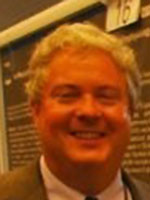Staff Reporter
TRB Panelists Consider Future Study Potential of LED Lighting

[Stay on top of transportation news: Get TTNews in your inbox.]
The long-term effects of roadway lighting is an area of study that could benefit from further targeted research, experts presenting during a Transportation Research Board webinar said.
They presented findings from a study on light-emitting diode (LED) roadway lighting’s acute effects on driver sleep health and alertness during a session Aug. 31. Their work examined street lighting’s short-term effects on nighttime melatonin suppression. Melatonin is the hormone that helps regulate sleep-wake cycles.
Because the study focused only on acute effects, long-term impacts remain unknown, according to Rajaram Bhagavathula, senior research associate at the Virginia Tech Transportation Institute’s Division of Vehicle, Driver and System Safety. These long-term effects could pertain to people who spend a lot of time on the road, such as truck drivers.

Hanifin
John Hanifin, assistant professor at Thomas Jefferson University, noted gauging truck driver alertness depends partially on their sleep schedules, which can vary dramatically.
“As far as alertness, it’s a tricky thing,” Hanifin said. “The drivers all have different physiological and sleeping backgrounds. Knowing their schedule [and] knowing how well they slept in their last sleep episode, these all impact their baseline.”
In terms of their specific study on acute effects, the researchers concluded LED roadway lighting does not significantly suppress salivary melatonin between 1 a.m. and 3 a.m. in healthy drivers. They also did not detect an increase in alertness in any of the study’s lighting conditions, which included LED, high-pressure sodium fixtures and no roadway lighting.
Bhagavathula discussed his team’s driver sleep physiology and alertness experiment, during which people were exposed to varying levels of light between 1 a.m. and 3 a.m. and operated a vehicle on VTTI’s test track.
What are the impacts of LED roadway lighting on driver sleep health and alertness? Attend our #TRBWebinar tomorrow to find out. Presenters from @VTTINEWS & @JeffersonUniv will discuss how LED impacts drivers' alertness & visability.https://t.co/YXqEVn0Tok pic.twitter.com/5mjKxGyehX — TRB (@NASEMTRB) August 30, 2021
The test vehicles were equipped with an array of sensors. Bhagavathula mentioned each participant was accompanied by someone sitting in the vehicle with them who could take control of the vehicle in case the operator fell asleep at the wheel (one did).
Participants’ levels of alertness were measured based on reaction times and the percentage of time their eyelids were closed over a three-minute period, which is a sign of drowsiness. Also, standard deviation of lane position was considered.
On average, participants’ eyes were closed approximately 30% of the time across all roadway lighting scenarios.

Gibbons
Ron Gibbons, head of the Infrastructure Based Safety Systems group at VTTI, said the goal of such research is to find the ideal lighting level for roadways. He explained “ideal” considers a number of dimensions, including roadway user safety, energy consumption, and impacts on light pollution and the environment.
Referencing a previous study he was involved in, Gibbons presented research indicating roadway lighting contributed to a decrease in the night-to-day crash rate ratio on interstates.
“We’ve got all these things where we’re starting to impact the environment [and] the roadway,” Gibbons said. “How do we control these light emissions so that we can maximize the benefit and put a number on these things?”

Bhagavathula
Bhagavathula listed a few considerations for future work. He suggested future studies should assess plasma melatonin rather than salivary melatonin, but noted this measure would be more difficult than salivary collection because it’s hard to collect blood in a moving vehicle.
Bhagavathula said light, and its associated effects, hinges on the right amount, used at the appropriate time and location. He suggested the benefits of adaptive lighting, which can be dimmed during periods of low use.
“[It’s] important to consider light as medicine,” Bhagavathula said. “You’d not only get energy benefits but also [you would be] reducing environmental impact.”
Want more news? Listen to today's daily briefing below or go here for more info:

